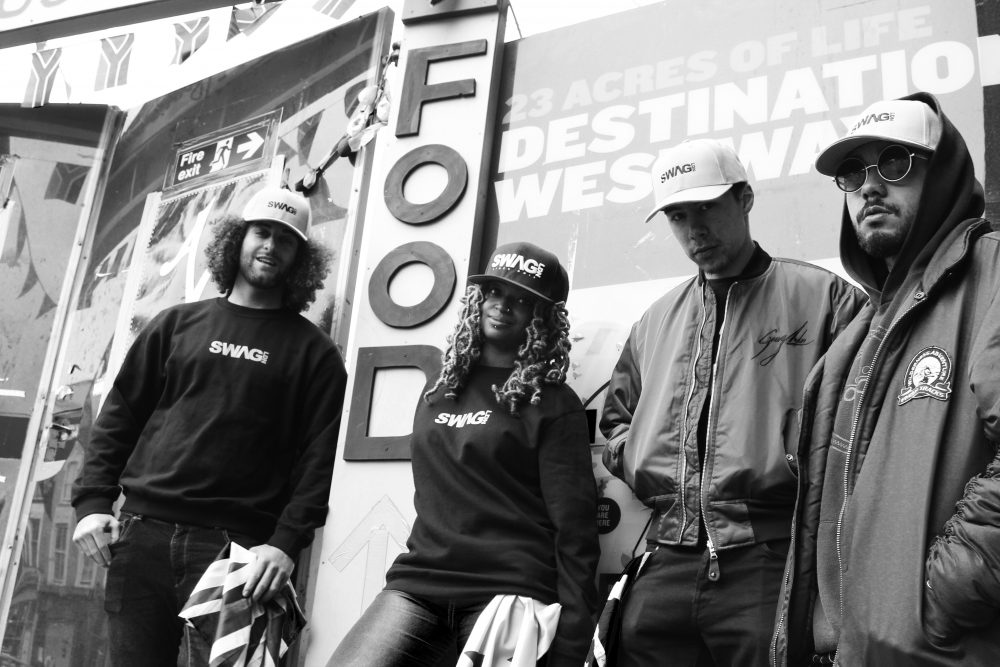After speaking to Shreya Dalmia and Lea Sorli in our first BA (Hons) Creative Direction for Fashion feature in May, we now meet Polish student Filip Lelitzki and Londoner Mo’Nique Atwal. Like the rest of the course, Filip and Mo’Nique have been encouraged to adopt technology and new forms of creative direction as the industry continues to be dictated by the internet revolution. Read how they incorporated technology, limits of the digital world and Adidas into their final major projects below.
Give us one interesting fact about yourself…
Mo’Nique: I was attracted to work in the fashion industry after watching That’s so Raven.
Talk us through your final project:
Filip: The final outcome is an online campaign promoting Claire Barrow’s SS16 collection. Deliverables is a film created with an application of 3D scanning technique, accompanied by a 3D-printed artefact. My project is based on theoretical research regarding remediation, which in short explores how through changing media we can create new things. The technique applied in the film is called photogrammetry and remediates photographs into 3D digital scenes, which directly refers to the theory but also Barrow’s practice as a designer known for incorporating illustrations into her garments.
Mo’Nique: My final project is a experiential space known as The Circuit. Three tunnels that show Adidas’ collection Standard 19 and provide information on the garments, and how they can enhance your lifestyle. Hopefully it educates and entertains the consumer.
What is the story behind your final piece of work?
Filip: The film is based on the theme of the collection — Broken Machines. It comments on our growing reliance on technology and potential consequences of its failure. The concept is conveyed in the narrative of the film, but it explores how it can create broken digitised outcome. The project explores the limits of our digital world, while seeking aesthetic values in virtual reality captured in the process.
Mo’Nique: Being a huge lover of Adidas, and knowing a lot about the development of their fabric and materials, I felt that their consumers should know more about this side of the brand. After researching peoples perceptions of the brand, it was clear that many people weren’t aware of the fabric and materials. This prompted me to produce a space where they could learn about the clothing while feeling entertained by seeing the clothing in action.
What’s the best thing about LCF?
Filip: The facilities available to students are really great. I have particularly benefited from access to all of the UAL libraries, and online resources such as lynda.com or Women’s Wear Daily, just to name but a few. These resources were indispensable during projects and self directed study. LCF also has brilliant specialist departments. For example, thanks to Digital Anthropology Lab, I was able to experiment with 3D printing which became part of my final piece.
Mo’Nique: The resources are fantastic. Lynda, which is an online tutorial site helped me a lot throughout my time on the course.
What’s the best thing about your course?
Filip: The independent-learning approach and freedom to explore areas of one’s own interest are among LCF’s biggest assets, but also challenges while being on the course. Especially in the final year, it takes a lot of self-motivation and figuring out what route to take for development of the project.
Have you undertaken any work experience or done a placement whilst at LCF? Where and how did you secure this work experience or placement?
Filip: Christopher Simmonds’s industry talk in year one encouraged me to apply for an internship with his studio and led to the subsequent summer placement. In my second year, I did design internships with DAZED and SHOWstudio.
Mo’Nique: I worked at Mi7 records in my second year. I got this placement through a friend.
What did you learn on your work experience/placement?
Filip: Work placements helped me narrow down my professional goals and personal development in relation to the course work in the final year, focusing on art direction and branding. While interning I was able to develop my skills in research, concept development and design in a professional environment. It was a valuable learning curve working in a team that worked on projects for clients including Gucci, Balenciaga and COMME des GARÇONS.
- Image credit: BA (Hons) Creative Direction for Fashion student Filip Lelitzki.
- Image credit: BA (Hons) Creative Direction for Fashion student Filip Lelitzki.
Mo’Nique: I have always been interested in the music industry and working there allowed me to see how the fashion and music industries work together. I was given a role where I needed to work independently which I found easy to do as there was a lot of support around me if I needed it.
Where do you want to be in your career in five years’ time?
Mo’Nique: Owning my own brand consultancy agency that works with upcoming British based urban brands.
- Image credit: BA (Hons) Creative Direction for Fashion student Mo’Nique Atwal.
- Image credit: BA (Hons) Creative Direction for Fashion student Mo’Nique Atwal.
What advice would you give to someone wanting to study your course?
Filip: Be curious about the subject, work hard and ask for constructive criticism rather than praise.
Mo’Nique: Be open to new ideas that will push your work out of your comfort zone.
- Find out more about BA (Hons) Creative Direction for Fashion
- Find out more about other undergraduate courses at LCF
- Find out more about postgraduate courses at LCF
- Find out more about all courses available at LCF
- LCF Open Days and Events
- More LCF News stories
- Course places available on UCAS Extra
- Follow LCFBA16 online
- More information on LCF Careers
- Follow Filip on Showtime and Instagram
- Follow Mo’Nique on Showtime and Instagram
- Digital Anthropology Lab









